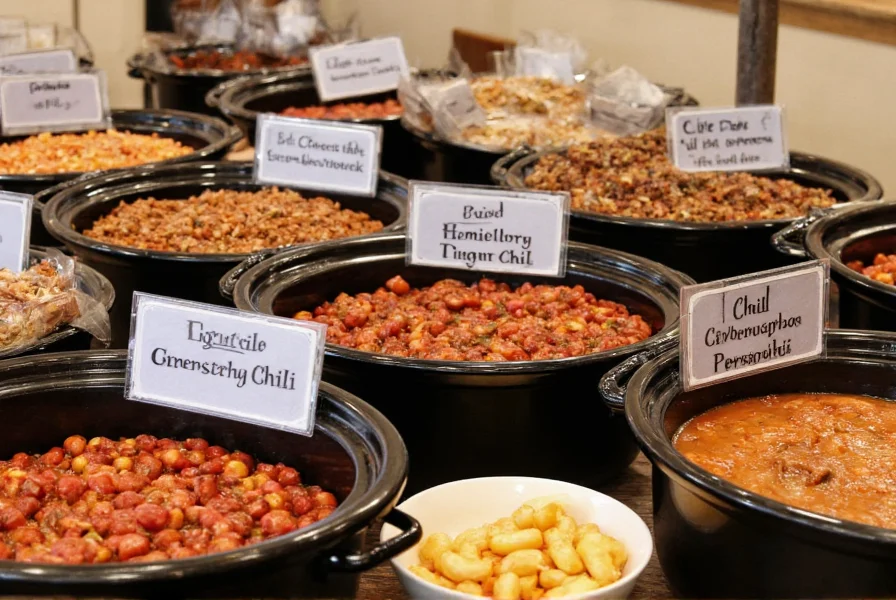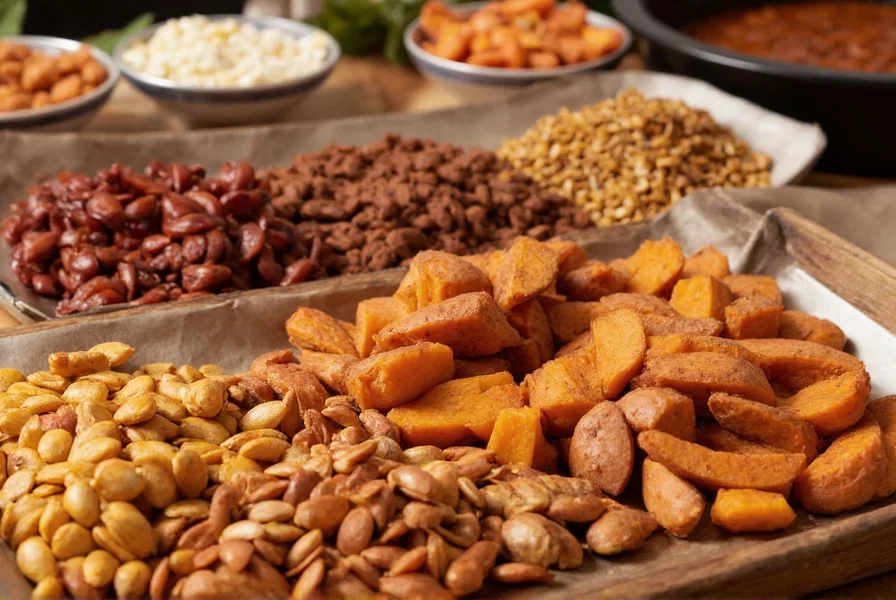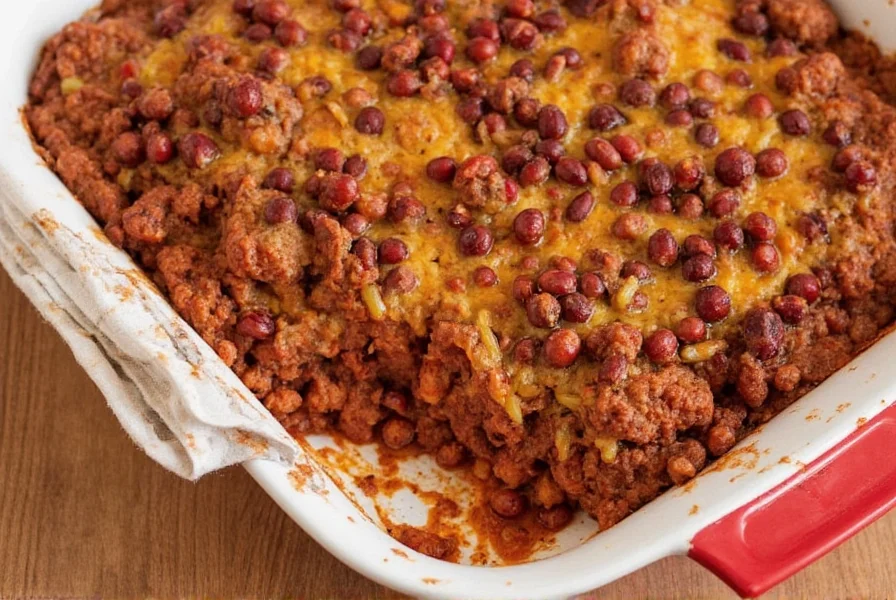The most successful chili bars feature 15-20 diverse toppings organized in logical categories, include at least three chili varieties to accommodate different tastes, and provide clear labeling for dietary restrictions. Essential elements include classic toppings like shredded cheese and sour cream, creative options such as pickled jalapeños and cornbread crumbles, and proper organization with tiered serving dishes and labeled containers.
Creating an unforgettable chili bar goes far beyond simply setting out a pot of chili and a few toppings. The best chili bars transform a simple meal into an interactive culinary experience that caters to diverse tastes and dietary needs while minimizing host stress. Whether you're planning a game day gathering, holiday party, or casual weekend get-together, these comprehensive chili bar ideas will elevate your spread from ordinary to extraordinary.
Essential Components of a Standout Chili Bar
A truly memorable chili bar requires thoughtful planning across several key areas: chili varieties, topping selection, organization strategy, and dietary accommodation. The magic happens when guests can customize their perfect bowl by combining different elements that complement their personal preferences. Professional caterers and party planners consistently emphasize that variety paired with clear organization creates the most satisfying guest experience.
Chili Base Variations for Diverse Preferences
Offering multiple chili options accommodates different taste preferences and dietary requirements. Consider these chili varieties:
- Traditional Meat Chili - The crowd-pleasing classic with ground beef, kidney beans, and robust spices
- Texas-Style - Bean-free with cubed chuck roast for authentic flavor
- Vegetarian Three-Bean - Hearty option with black, pinto, and kidney beans
- White Chicken Chili - Lighter alternative with shredded chicken and white beans
- Smoky Chipotle - Adds depth with adobo peppers and smoked paprika
Pro tip: Keep chilis warm in slow cookers set to 'warm' rather than 'cook' to prevent overcooking during extended serving periods.

Comprehensive Topping Selection Guide
The topping selection makes or breaks a chili bar experience. Organize your toppings into logical categories for easy navigation:
| Category | Recommended Toppings | Special Considerations |
|---|---|---|
| Creamy Elements | Sour cream, Greek yogurt, avocado crema, shredded cheese, queso fresco | Offer dairy-free alternatives like cashew cream for vegan guests |
| Crispy Textures | Tortilla chips, cornbread crumbles, fried onions, crushed Fritos | Keep chips in separate containers to maintain crunch |
| Fresh Elements | Diced onions, cilantro, scallions, lime wedges, pico de gallo | Change out fresh toppings every 2 hours for food safety |
| Spicy Additions | Pickled jalapeños, hot sauce bar, fresh serranos, chili flakes | Label heat levels clearly (mild, medium, hot) |
| Sweet Contrasts | Pineapple salsa, mango chunks, corn relish, sweet pickled onions | Balances heat and adds complexity to flavor profile |
Practical Organization Strategies
How you present your chili bar significantly impacts the guest experience. Follow these professional hosting tips:
- Flow design - Arrange stations in logical sequence: bowls first, then chili, toppings, and finally garnishes
- Temperature control - Use chafing dishes with fuel cans for toppings that need warming
- Labeling system - Create clear, attractive signs noting ingredients and common allergens
- Portion management - Use smaller serving dishes that can be quickly refreshed from larger containers backstage
- Waste reduction - Provide small tasting spoons for guests to sample toppings before committing
For larger gatherings, consider implementing a "chili bar assembly line" where guests move from station to station, preventing bottlenecks at popular topping areas. This professional catering technique keeps lines moving while ensuring everyone gets exactly what they want.
Accommodating Dietary Restrictions
Modern chili bars must address common dietary needs without compromising flavor. Thoughtful hosts prepare for these common requirements:
- Gluten-free - Verify all chili ingredients and provide corn-based toppings instead of wheat crackers
- Vegan - Offer plant-based chili and dairy alternatives like cashew sour cream
- Dairy-free - Clearly label non-dairy cheese alternatives and keep them separate from dairy products
- Nut allergies - Avoid nut-based toppings and verify all ingredients for potential cross-contamination
- Low-sodium - Prepare one mild chili option with reduced salt and offer fresh toppings that don't require additional salt
Color-coded serving utensils (red for spicy, green for vegetarian, blue for vegan) help guests quickly identify suitable options without constant questioning.
Budget-Friendly Chili Bar Solutions
You don't need to spend extravagantly to create an impressive chili bar. These cost-effective strategies deliver maximum impact:
- Focus on 3-4 chili varieties instead of 5-6 to reduce ingredient costs
- Make your own toppings like pickled onions or corn relish instead of purchasing pre-made versions
- Use seasonal produce for fresh elements to maximize value
- Repurpose leftovers creatively - extra chili becomes tomorrow's taco filling
- Borrow serving dishes from friends rather than purchasing new ones
Remember that quality matters more than quantity. Eight thoughtfully selected toppings create a better experience than twenty haphazard options.
Seasonal Chili Bar Adaptations
Tailor your chili bar to the time of year for added relevance and freshness:
- Fall - Incorporate roasted pumpkin seeds, apple cider reduction, and cinnamon-spiced sweet potatoes
- Winter - Feature hearty options like shredded braised short ribs and warm cornbread squares
- Spring - Add fresh herbs, pea shoots, and citrus-infused crema for brightness
- Summer - Include grilled corn salsa, watermelon radish slices, and herb-infused oils

Final Implementation Checklist
Before your event, verify these critical elements for chili bar success:
- All chilis are properly heated and maintained at safe temperatures (140°F/60°C minimum)
- Toppings are organized in logical sequence with clear signage
- Dietary accommodations are clearly labeled and physically separated
- Enough serving utensils are available (one per topping plus backups)
- Waste stations are positioned at the end of the serving line
- Emergency supplies are backstage (extra napkins, additional toppings, cleaning supplies)
By implementing these comprehensive chili bar ideas, you'll create a memorable, interactive dining experience that accommodates diverse preferences while minimizing host stress. The key to success lies in thoughtful organization, quality ingredient selection, and attention to guest experience details that transform a simple meal into a standout event.











 浙公网安备
33010002000092号
浙公网安备
33010002000092号 浙B2-20120091-4
浙B2-20120091-4